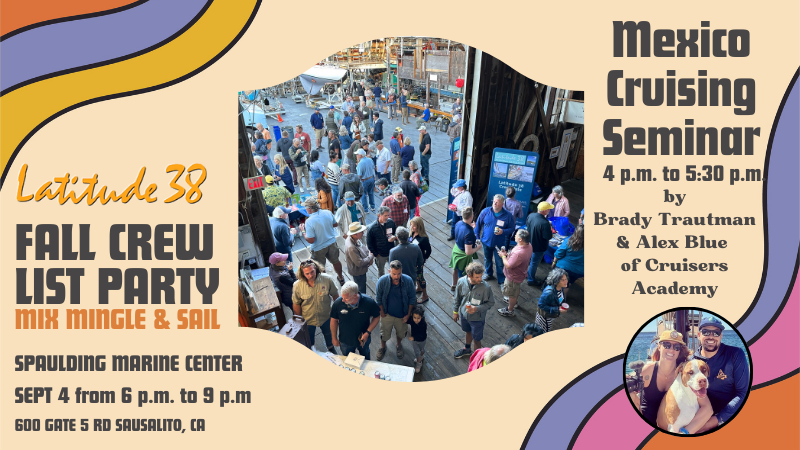
Boat Sunk by Pod of Orcas; Sea Shepherd Disputes Bladed Rudder as Deterrent
In a recent incident off the coast of Spain, the British-flagged Beneteau 393 Bonhomme William sank after an encounter with a pod of five orcas. The international yacht delivery group Halcyon Yachts issued a warning on its Facebook page for “all vessels near Barbate and Tarifa.” The UK publication Marine Industry News reported on the incident, saying the boat had been attacked over a two-hour period.
The Bonhomme William was on a 10-day voyage from Vilamoura, Portugal, to Greece. They were just 22 hours into their journey when five orcas circled the 39-ft vessel and, in what the skipper Robert Powell called “a coordinated assault,” took turns ramming the boat.
“On the second hit, I looked over the back of the boat, and I could see the dark shape of a killer whale in the water,” the New York Post reported. The orcas first targeted the rudder, which became useless, and then moved to attack the hull, keel and stern.
“They were circling. It was like watching wolves hunt,” Powell said. “They were taking it in turns to come in — sometimes two would come in at the same time and hit it. So obviously pretty terrifying.”
Powell, who was celebrating his birthday aboard the boat, said he tried “everything from dropping firecrackers in the water and turning off the engine to deter the attack, but the pod was determined.”
When the attack occurred, on the evening of July 24, the Bonhomme William sent out a distress call that was received by the Maritime Rescue Coordination Centre at Tarifa, Spain. The sailboat’s crew reported that their vessel had been disabled by orcas and was adrift about two miles off Punta Camarinal. As the rescue vessel was underway, the Bonhomme William radioed to report they were still being struck by the orcas. The boat began taking on water. The crew deployed their liferaft but were advised to stay on the yacht while the orcas were still in the vicinity.
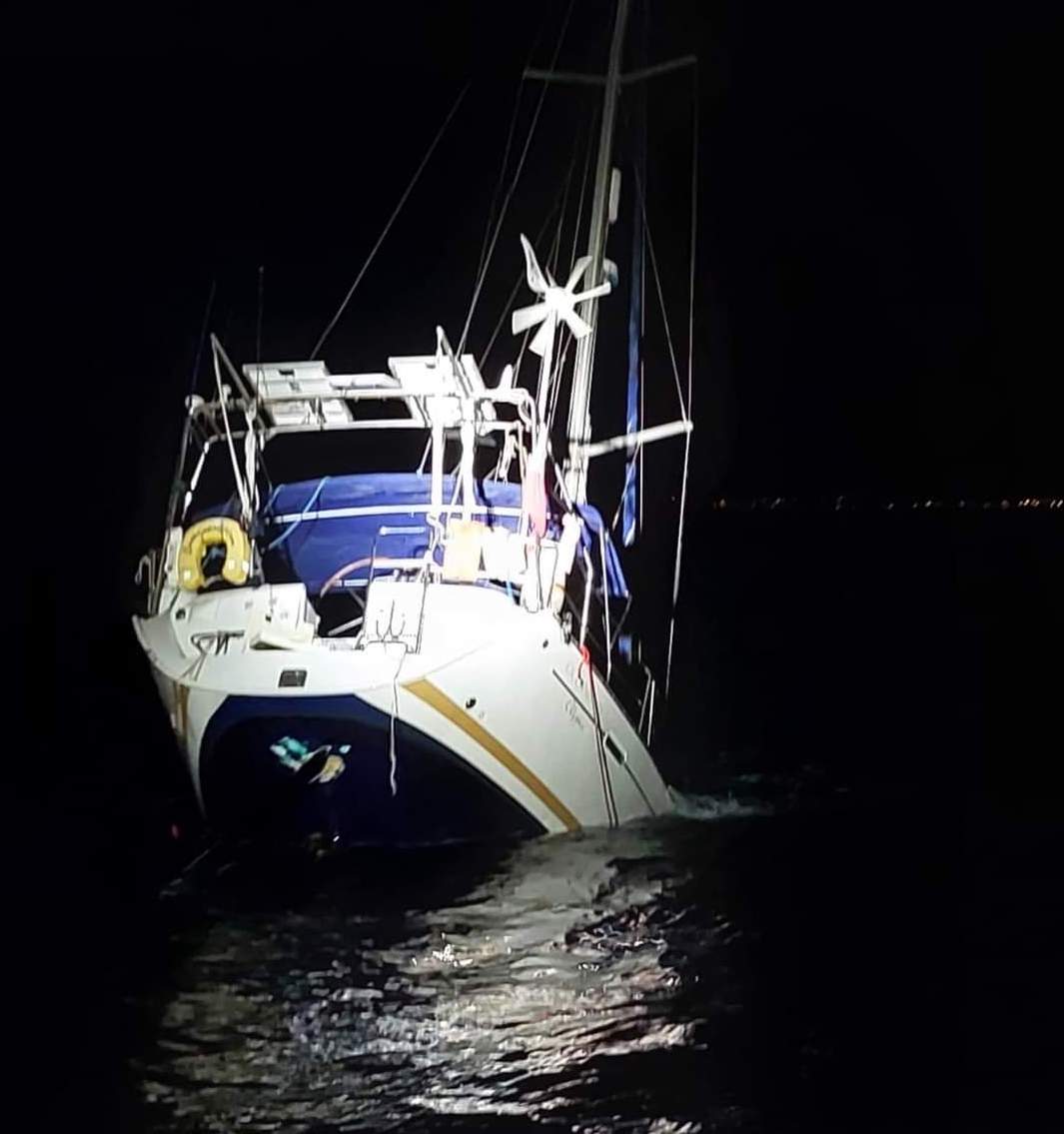
The rescue boat arrived on scene, rescued the three sailors, and retrieved some of the hazardous materials aboard the yacht. By the time they departed the scene, Bonhomme William was already partially submerged with its stern in the air, and it later sank. Bonhomme William’s three crewmembers were taken to shore in Cadiz.
Just days later, in Barbate Marina, also in Cadiz, Sea Shepherd France (SSF) was collecting footage of what it says is a rudder lined with sharpened blades, presumably to act as a deterrent against orca attacks.
“We filmed this French boat in Barbate marina,” SSF told Marine Industry News. The footage below was released on July 28. “It is now back on the water.”
Together with WeWhale, SSF has been patrolling the Iberian coastline, aiming to prevent any reprisals against the orcas after they have “‘interacted’ with vessels.” They also say “no one has been injured in the orca interactions,” and that the Iberian killer whale subspecies is critically endangered.
SSF says they were told by local police that while orcas are strictly protected by law, “There is a grey area regarding this type of equipment, which can cause them injury.” The organization is putting together a complaint on the grounds of “‘attempted destruction of a protected species’.”
SSF’s X feed includes a statement of their intentions regarding the protection of Iberian orcas.
We’ve shared several reports on orca incidents, with recent hypotheses suggesting the orcas are simply bored teenagers.
‘Good Jibes’ #154: Summer Vacation Flashback to ‘Good Jibes’ Past (Part 3)
Welcome to part three of the Good Jibes summer vacation flashback series. We look forward to getting back to our regular weekly schedule of Good Jibes guests next week. In the meantime, we bring you three episodes from 2021 and 2022.
In keeping with the current world sporting event and last week’s episode, we start off with Episode #54: Daniela Moroz on Formula Kiting to Victory. Right now, Daniela is in Marseille, France, competing in kite sailing’s Olympic debut. As of this writing, she was in third place, with many more races ahead.
Tune in to hear Daniela chat with host Moe Roddy about how she fell in love with kiteboarding, the learning curve from a regular kite to a foiling kite, her training approach for the Olympics and other elite competitions, how to conquer intimidation in new surroundings, and whether she ever gets worried about sharks.
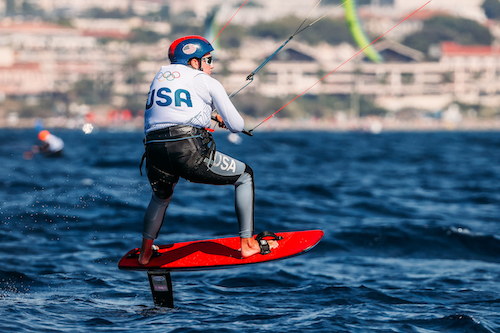
Next we dive deeper into the archives and reconnect with Chuck Hawley in Episode #3: Chuck Hawley Describes His Offshore Sailing Adventures and Lessons.
Chuck was chairman of the US Sailing Safety at Sea Committee, has sailed over 40,000 miles on a range of vessels, and worked for West Marine for over 30 years. Hear Chuck talk with host Ryan Foland about how to approach your first offshore race, why it’s OK to be intimidated, how to find your community of sailors, West Coast vs. East Coast sailing, and how he turned a depressing race into a joyful journey. This episode covers everything from Chuck’s storied sailing career to getting your captain’s license.
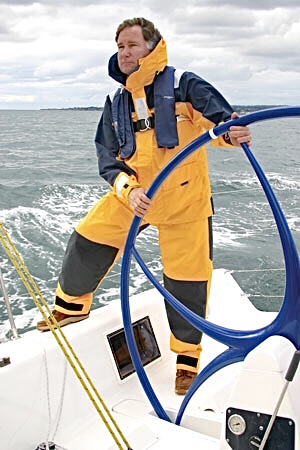
Our third episode today is #53:Brian Crawford on Exploring Shipwrecks. Brian is an author, historian, and open-space activist who has done extensive research on famous and undocumented shipwrecks throughout Marin County. His own sailing experience includes taking a schooner down the East Coast into a hurricane, meeting his wife in Tonga, and serving as a navigator in the Rolex Sydney Hobart Yacht Race.
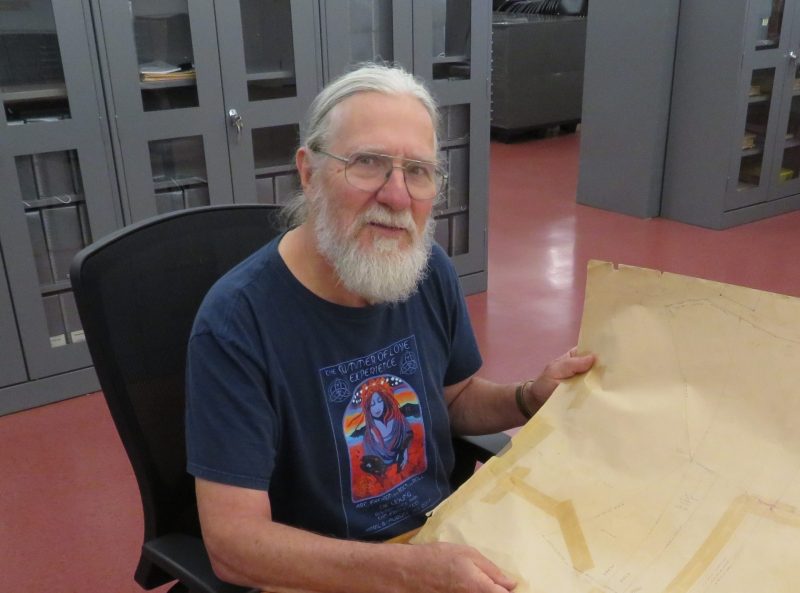
We hope you enjoy this week’s podcasts. If you have a particular sailor you would like to hear on the Good Jibes podcast, let us know and we’ll do our best to get them on board.
Get $150 off Your First Month at Beautiful Marina Village Harbor
Costa Rican Wooden Cargo Ship Takes Shape on Pacific Coast
Sailors have always explored the world and continue to explore how the world of sailing can contribute to a sustainable planet. Along the Costa Rican coast is another group of sailors looking to the past to help find a way forward. We heard the story of SailCargo while listening to Here and Now on KQED.
SailCargo Inc. is a crowdsourced startup building a wooden cargo ship in Punta Morales in Costa Rica’s Gulf of Nicoya. The group was started by co-founders John Porras and Lynx Guimond with a mission to “create a regenerative model within the maritime transport sector that fosters the development of thriving communities and ecosystems.” In short, they want to build a fleet of wooden ships that can carry cargo under wind power. They are currently building their first ship and pioneer of their “clean shipping movement,” Ceiba, a 150-ft (loa) three-masted topsail schooner. When operational, she will emit zero emissions by utilizing her traditional sails and accompanying auxiliary electric motors.
“Some people say that it’s an art piece,” says SailCargo employee Alejandra Terán.
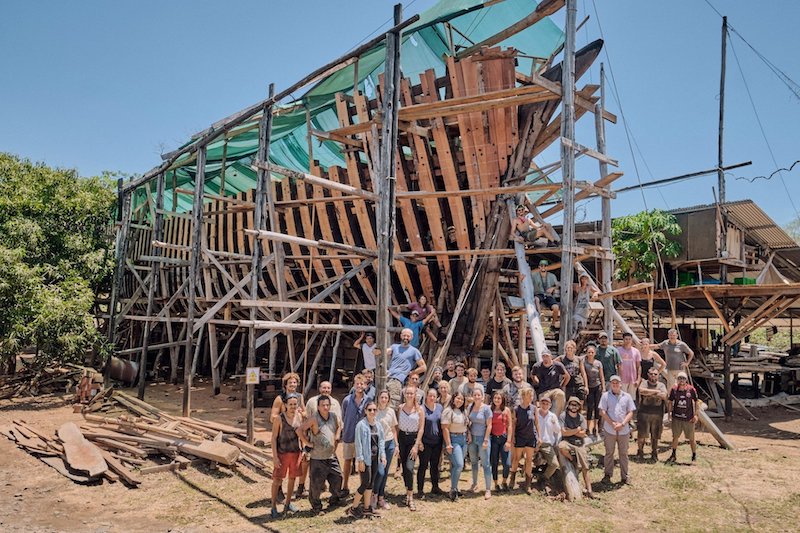
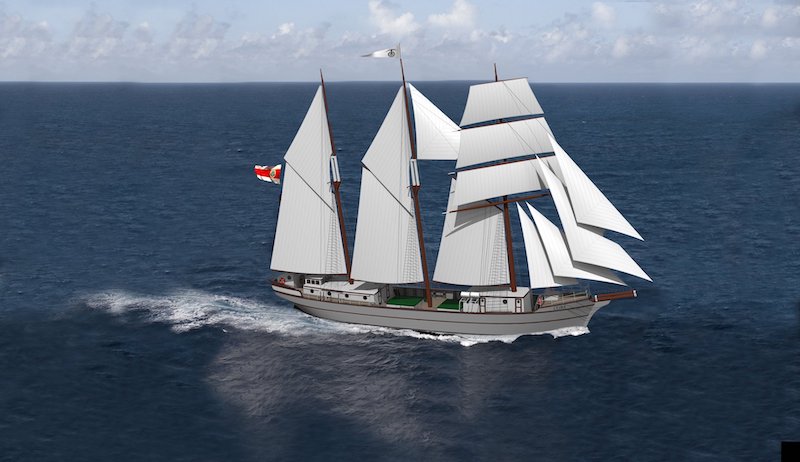
The ship is designed to carry 250 tons of freight — the equivalent of nine standard shipping containers — and will transport “anything from coffee to cacao, to electric vehicles. Hopefully sustainable clients, but we can also ship tires or pineapples or whatever else,” Guimond tells Here and Now.
The project has been funded by private investors who share the organization’s vision of zero-emission shipping, and are supportive of their broader impact. SailCargo Inc. also operates a reforestation program under its nonprofit AstilleroVerde (Spanish for “Green Shipyard”) to replace all the timber used in the construction of Ceiba and offset the remaining construction and operational emissions of SailCargo Inc.
To get an operational vessel on the water sooner, the group has bought and launched Vega, a three-masted cargo barkentine built in Sweden in 1909 and rebuilt from 1993-2008.
Various other wind-powered cargo ships are already on the water, such as the schooner Apollonia that sails up and down New York’s Hudson River, and a handful of oceangoing cargo ships. But Steven Woods, a US-based sail-freight expert, tells Here and Now that SailCargo is the only company building a large wooden cargo schooner from scratch.
We’re interested to see the outcome and launch of Ceiba. You can learn more about the project at SailCargo Inc.
The Resourceful Sailor — “Sampaguita’s” Solar Solution
Sampaguita, a 1985 Pacific Seacraft Flicka 20 sailboat, heavily depends on solar power for energy rejuvenation while cruising. From June 2023 to the 2024 New Year, she sailed over 3,700 miles, from the northern end of Canada’s Vancouver Island to the southern tip of Mexico’s Baja Peninsula, always off-grid. Her diminutive size requires many weight and space considerations for long-distance voyaging, and additionally, she operates with minimal and simple systems. Too many bells and whistles are impractical for a boat her size. I deemed solar the most adaptable, lightweight, affordable, and versatile energy solution for her. Not to say I achieved perfection. Cloudy days and a lack of multiple charging systems have proven challenging and required adjustments. But the adage “all boats are a compromise” holds. “You’re going to need a bigger boat” (from Jaws) works for some, but not for Sampaguita and The Resourceful Sailor.
Sampaguita lacks an inboard diesel engine, the go-to power plant for most cruisers. Whatever the latest hype, fossil fuels are still king. The trade-off is increased storage capacity where the inboard engine would be. She does have a 6hp outboard on the transom with a 12-volt, 5-amp charger. I have used this a few times, though it is not ideal for the lithium batteries she carries.
With the outboard engine, a stern-hung rudder, a self-steering wind vane — and propane tanks on the transom — I deemed the extra weight, complication, expense, and space infringement of a hydrogenator and wind generator too much. Sampaguita pushes her waterline, already raised 4 inches when fully loaded for cruising. (Add my weight to the cockpit for further squatting.)
A Flicka 20 is a great sailing vessel. However, the short waterline can contribute to hobby horsing, so every effort is made to keep the weight well distributed and low, with minimal windage, to mitigate unwanted motion. With this in mind, the classic arch, or canopy, for mounting panels over the cockpit was unsuitable. Brackets outboard meant additional hardware obstructing lines, leads, cleats, and access to the other necessary gear, resulting in dangerous overcrowding on a lively, small boat. Rigid panels brought images of the large triangular divots in my forehead their corners would make. There is no dodger to mount a panel, and the hatch and under-boom deck space are too shaded and restricted for permanent mounting.
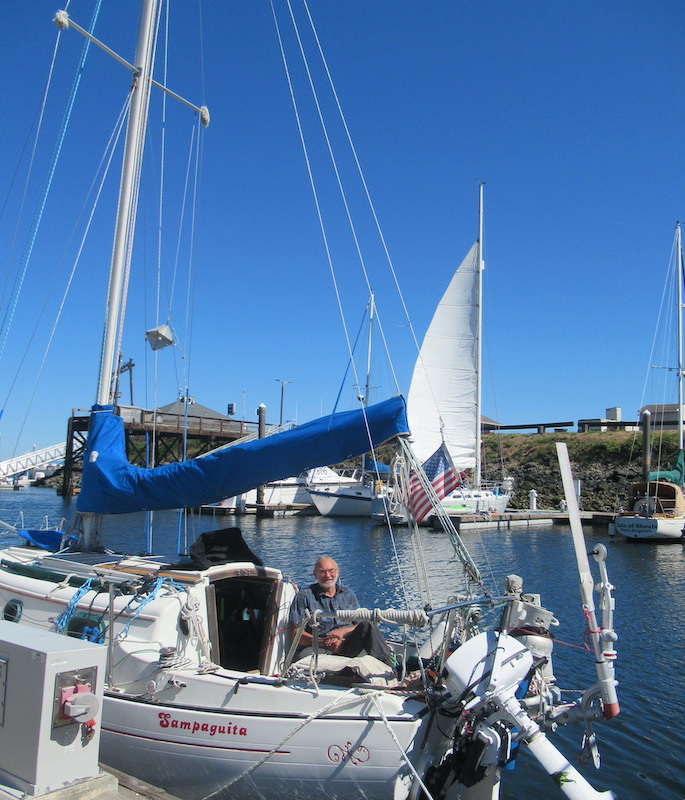
I decided to use multiple small, 50-watt flexible solar panels temporarily mounted for easy adjustment and mobility depending on the angle of the sun, the boat’s direction, and her tack. Two panels are placed on the deck on either side of the boom with bungees and lightweight lines while sailing.
Continue reading in the August issue.
A ‘Save The Dater’ — Latitude 38 Baja Ha-Ha Fall Crew Party
